Other Research About Mass Violence
The following articles have been selected by the Research and Evaluation Division at the National Mass Violence Center from the overall literature on mass violence and its consequences. The articles provide valuable information on a variety of topics relating to, and affected by, mass violence. These areas include the mental health characteristics and consequences of mass violence, as well as planning for, and intervention after, a mass violence incident.
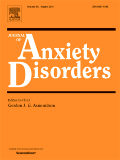
Emotion regulation and PTSD following mass shooting
Bardeen, J. R., et al., (2013). Emotion regulation difficulties as a prospective predictor of posttraumatic stress symptoms following a mass shooting. Journal of Anxiety Disorders, 27, 188-196.
Bardeen and associates examined the relationship between emotion regulation difficulties (ERD) and posttraumatic stress symptoms (PTSS) before and after a campus mass shooting at Northern Illinois University. The study found intense emotional reactions to trauma-related cues post-event. While immediate effects of increased PTSS levels were common, only a small percent of participants reported sustained levels of PTSS months after the incident. ERD was found to prospectively predict PTSS severity after exposure to traumatic events. Results suggest that ERD has a role in the development of posttraumatic stress disorder (PTSD) after traumatic events. These findings may have important clinical implications and support the idea that exposure therapy may be an effective treatment for PTSD.
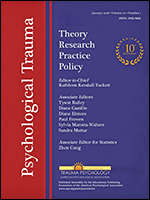
Social and contextual influences on mental health after mass violence
Felix, E. D., et al. (2017). Social and Contextual Influences on Mental Health Following an Episode of Mass Violence. Journal of Interpersonal Violence.
Researchers examined how media coverage, family reactions, and disappointment in social support affect mental health after a mass violence incident. Researchers found that females were more affected by negative perceptions of media coverage than males and across the sample, negative perceptions of media coverage were correlated with higher levels of PTSS. The study reported that negative family reactions were correlated with higher levels of PTSS, avoidance, and anxiety symptoms. The majority of respondents expressed no disappointment in regards to how individuals in their social support network responded to the tragedy. Researchers concluded that the media need to be more sensitive when covering traumatic events and that information on how to positively support those affected should be available and easily accessible to the community.
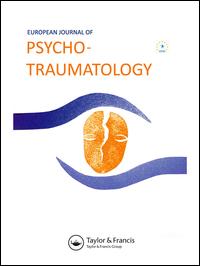
PTSD and narrative structure following terrorist attacks (adolescents)
Filkukova, P., et al. (2016). The relationship between posttraumatic stress symptoms and narrative structure among adolescent terrorist-attacked survivors. European Journal of Psychotraumatology 7(1), 29551.
This study looked at the relationship between narrative structure of a traumatic event and posttraumatic stress symptoms (PTSS). Researchers compared the narratives of two groups of adolescents who were exposed to a mass violence incident in Norway. The participants were grouped based on reported levels of PTSS. Individuals reporting high levels of PTSS were more likely to recount the incident using external events (specific actions and dialogues) as opposed to the low-level group who tended to use internal events such as thoughts and feelings to describe the event. Filkukova and colleagues suggested that description of external and internal events in a narrative may be important indicators of PTSS level.
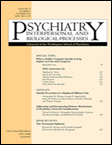
Essential elements to intervention following a mass trauma event
Hobfoll, S. E., et al. (2007). Five Essential Elements of Immediate and Mid-Term Mass Trauma Intervention: Empirical Evidence. Journal of Psychiatry, 70(4), 283-315.
Researchers identified five principles to be used as a guide in developing sound practices and programs following a disaster or mass violence event. The five core elements were: a sense of safety (real or perceived), calming, self- and community-efficacy, individual and community connectedness, and promoting hope. Using empirically supported data, each principle suggested appropriate inventions at the individual and community level. These suggestions can help guide community leaders, emergency management, and public health efforts in the early and mid-term stages following a mass trauma.
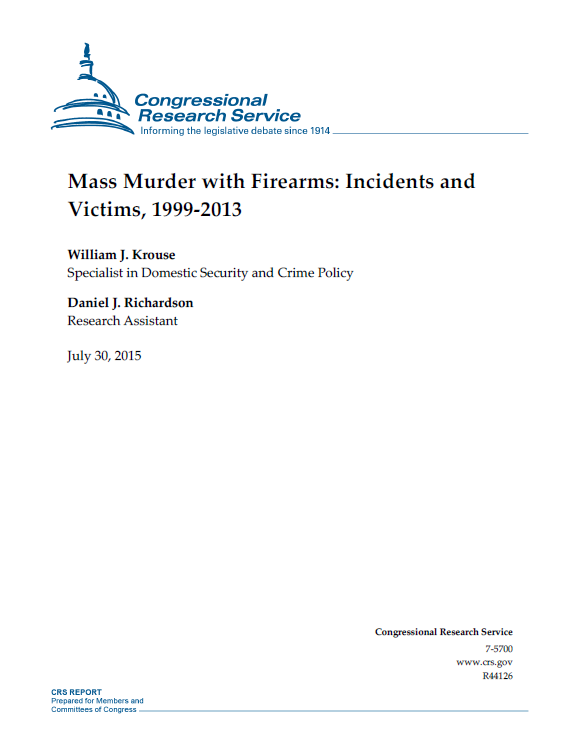
Definitions, statistics, and mental health characteristics related to mass violence
Krouse, W. J. & Richardson, D.J. (2015). Mass Murder with Firearms: Incidents and Victims, 1999-2013. Congressional Report Service.
The report focuses on definitions and forms of mass murder, statistics of mass shootings, and the mental health of the offender on a policy level. For the purpose of this report, mass shooting was defined as “a multiple homicide incident in which four or more victims are murdered with firearms, within one event, and in one or more locations in close proximity." The report examines mass shooting occurrences within a 15-year period from 1999 to 2013, and also presents a 44-year dataset of firearms-related mass murders that could be considered as mass shootings. The data in this report suggest that the prevalence of mass public shootings increased over the 44-year period. From 1999 to 2013, an average of 31 mass murders took place per year in the United States, with 21 of those incidents being committed using solely a firearm. To prevent mass murders with a firearm, congress and other policymakers have relied on policy change. For example, a policy that aims to keep track of those who may be at risk of committing such a crime with a firearm. In addition, they track and regulate the records of those who fall under the specifically defined categories of mentally defective, mentally incompetent, mentally unstable, or those who have a serious criminal history record. One thing remains consistent among researchers – the need to develop a standardized set of definitions for mass shootings in order to move forward with empirically valid research on mass murder.
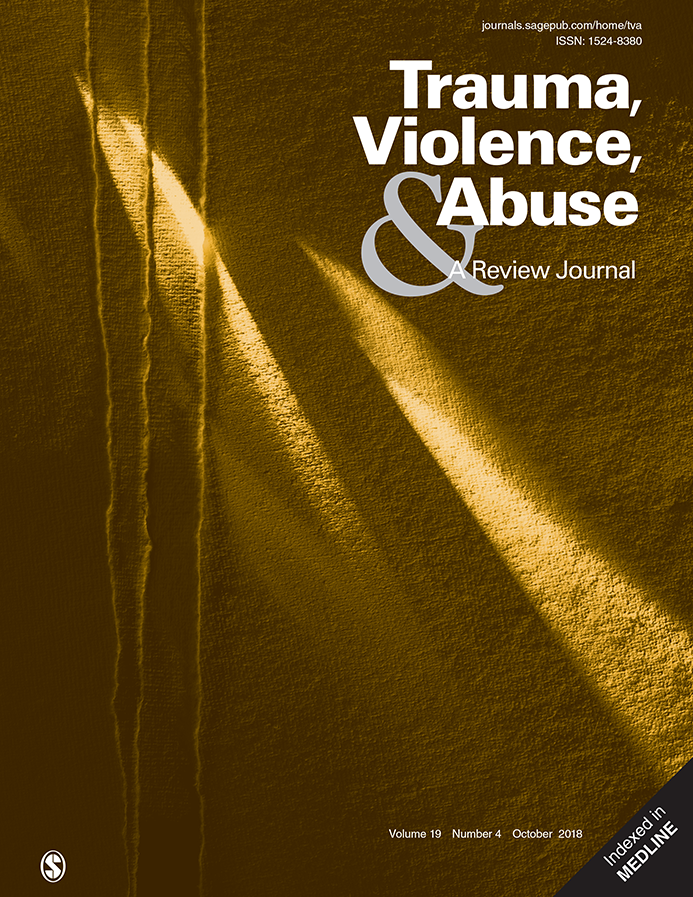
Mental health consequences of mass shooting
Lowe, S. R. & Galea, S. (2017). The Mental Health Consequences of Mass Shooting. Trauma, Violence, & Abuse, 18(1), 62-82.
Forty-nine studies on 15 different mass shooting incidents that took place between 1984 and 2008 were analyzed. The purpose of the study was to review the mental health impacts of mass shooting incidents on survivors and members of the communities in which they took place. They concluded that there are long-term and short-term mental health consequences for victims and those in the community following a mass shooting incident, including posttraumatic stress disorder (PTSD), major depression and various other psychiatric disorders. Researchers identified several risk factors for adverse outcomes. The most prevalent risk factors included female gender, a lower socioeconomic status, and higher direct exposure. Researchers concluded that further research is necessary to dig deeper into the risk and protective factors that contribute to the long-term outcomes of mass shootings.

Grief and mass violence
Smith, A. J., et al. (2015). Persistent Grief in the Aftermath of Mass Violence: The Predictive Roles of Posttraumatic Stress Symptoms, Self-Efficacy, and Disrupted Worldview. Psychological Trauma: Theory, Research, Practice, and Policy, 7(2), 179-186.
This study reported on posttraumatic stress symptoms (PTSS) on students 3-4 months after the Virginia Tech shootings, and severity of grief one year following the shooting. Researchers found that higher PTSS severity 3-4 months after the incident was correlated with higher PTSS severity one year later. The model showed that the higher PTSS at one year was influenced by lower self-efficacy and a disrupted worldview. Researchers suggested that interventions to address PTSS and increase self-efficacy can help decrease the chance of negative long term mental health outcomes.

PTSD and mass violence
Sullivan, C. P., et al. (2018). Network Analysis of PTSD Symptoms Following Mass Violence. Psychological Trauma, 10(1), 58-66.
Approximately three months following the Virginia Tech shootings, researchers collected data via an internet survey to understand the relationship between different symptoms of posttraumatic stress disorder (PTSD). Network analyses showed that intrusive symptoms (e.g., intrusive thoughts) had the greatest influence on other symptoms and that concentration problems were the most extensively connected to all other symptoms. This study examines how different symptoms can affect the development and severity of other symptoms. This approach could be applied clinically by identifying key symptom(s) that are highly influential and likely to affect the manifestation of other symptoms. For example, anger was found to be a key symptom and PTSD and may quickly influence the manifestation or severity of other symptoms.
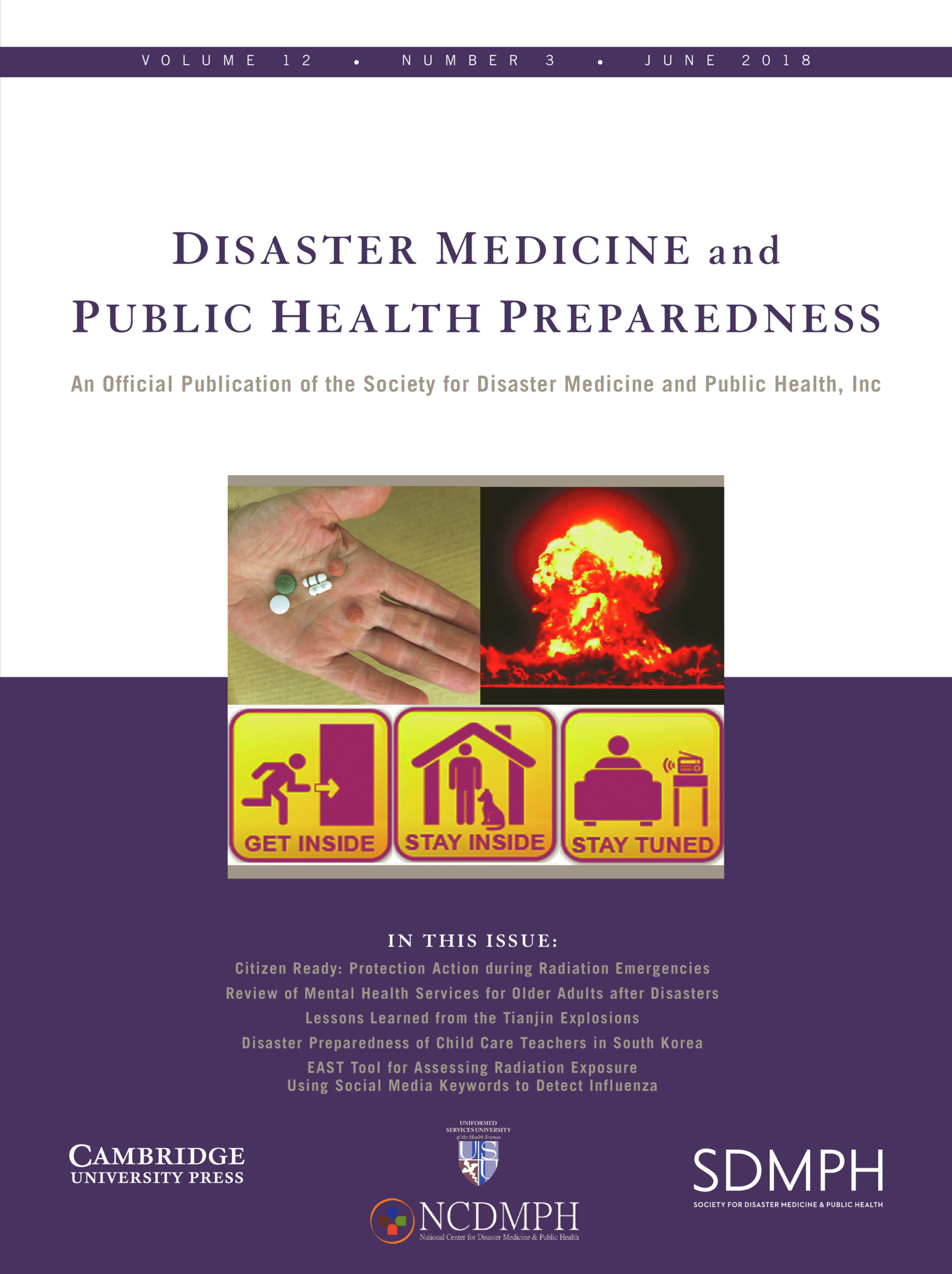
Planning for mass violence incidents
Turris, S. A., Lund, A., & Bowles, R. R. (2014). An analysis of mass casualty incidents in the setting of mass gatherings and special events. Disaster Medicine and Public Health Preparedness, 8, 143-149.
This study examined the characteristics of 290 mass violence incidents, including those inside and outside of the United States, to help responders prepare for potentially risky settings. The most common settings for mass violence incidences included movement of people in crowded conditions, special hazards, structural failures, deliberate events, and toxic exposures.

Substance use and functional impairment among adolescents directly exposed to the 2001 World Trade Center attacks
Chemtob, C. M., Nomura, Y., Josephson, L., Adams, R. E., & Sederer, L. (2009). Substance use and functional impairment among adolescents directly exposed to the 2001 World Trade Center attacks. Disasters, 33(3), 337-352. doi:10.1111/j.03613666.2008.01077.x
This article looks at the relationship between exposure to the September 11 attacks, increased substance use, mental health services use, and functional impairment. An in-school survey was completed by middle and high school students in lower Manhattan 18 months following the 9/11 attacks. After controlling for depression and PTSD, students who reported at least one exposure-related risk factor (e.g., concern about safety, relationship to someone killed in the attack) were 5 times more likely to report an increase in substance use. Students who reported three or more exposure risk factors were 19 times more likely to report increased substance use. Students who reported an increase in substance use were twice as likely to want help but no more likely to receive help, compared to students without increased substance use. Those students also were more likely to report decreased school performance.
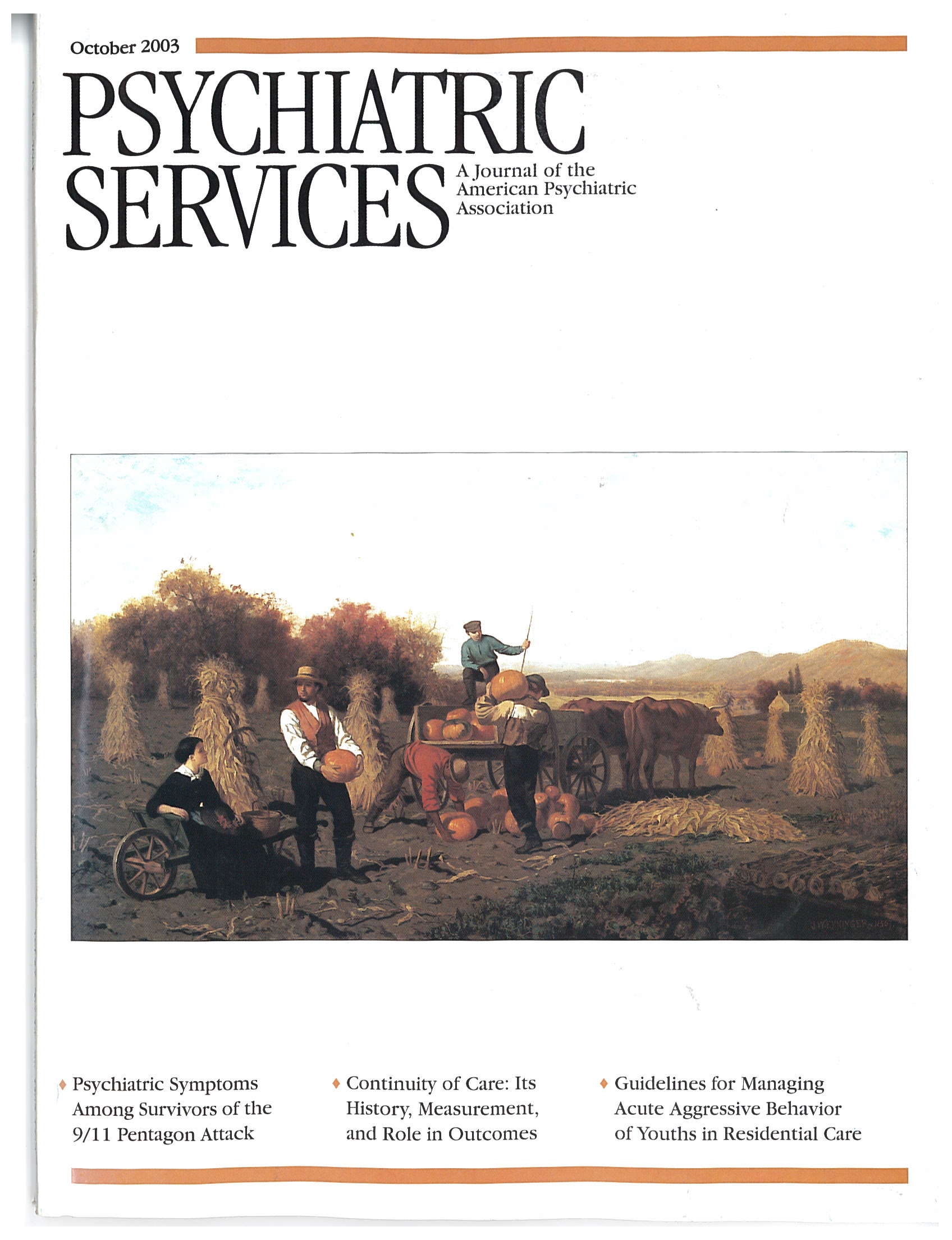
Acute stress disorder, alcohol use, and perception of safety among hospital staff after the sniper attacks
Grieger, T. A., Fullerton, C. S., Ursano, R. J., & Reeves, J. J. (2003). Acute stress disorder, alcohol use, and perception of safety among hospital staff after the sniper attacks. Psychiatric Services, 54(10), 1383-1387.
This study looked at the emotional and behavioral effects on hospital staff after the DC sniper shootings. Depression and feeling unsafe were two of the risk factors for increased alcohol use. Also, increased alcohol use was one of the risk factors associated with acute stress disorder. The authors note that the study’s findings of levels of acute stress disorder were similar to levels of PTSD in New York City after the World Trade Center attacks.
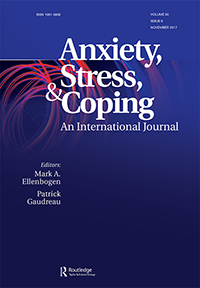
High dose alcohol consumption predicts less reduction in post-traumatic stress symptoms after a campus mass shooting
Holzman, JB; Valentiner, DP; Hannan, SM; Wallace, DG and Orcutt, HK, 2017, High dose alcohol consumption predicts less reduction in post-traumatic stress symptoms after a campus mass shooting, Anxiety, Stress & Coping: An International Journal
This study examined the relationship between binge drinking following the Northern Illinois campus shooting, exposure to the event, and symptoms of PTSD. Researchers found that those who reported binge drinking in the weeks following the event show less of a decrease in symptoms of PTSD over 8 months. Students with higher levels of binge drinking showed a relationship between exposure to the shooting and less of a decrease in PTSD symptoms over time.
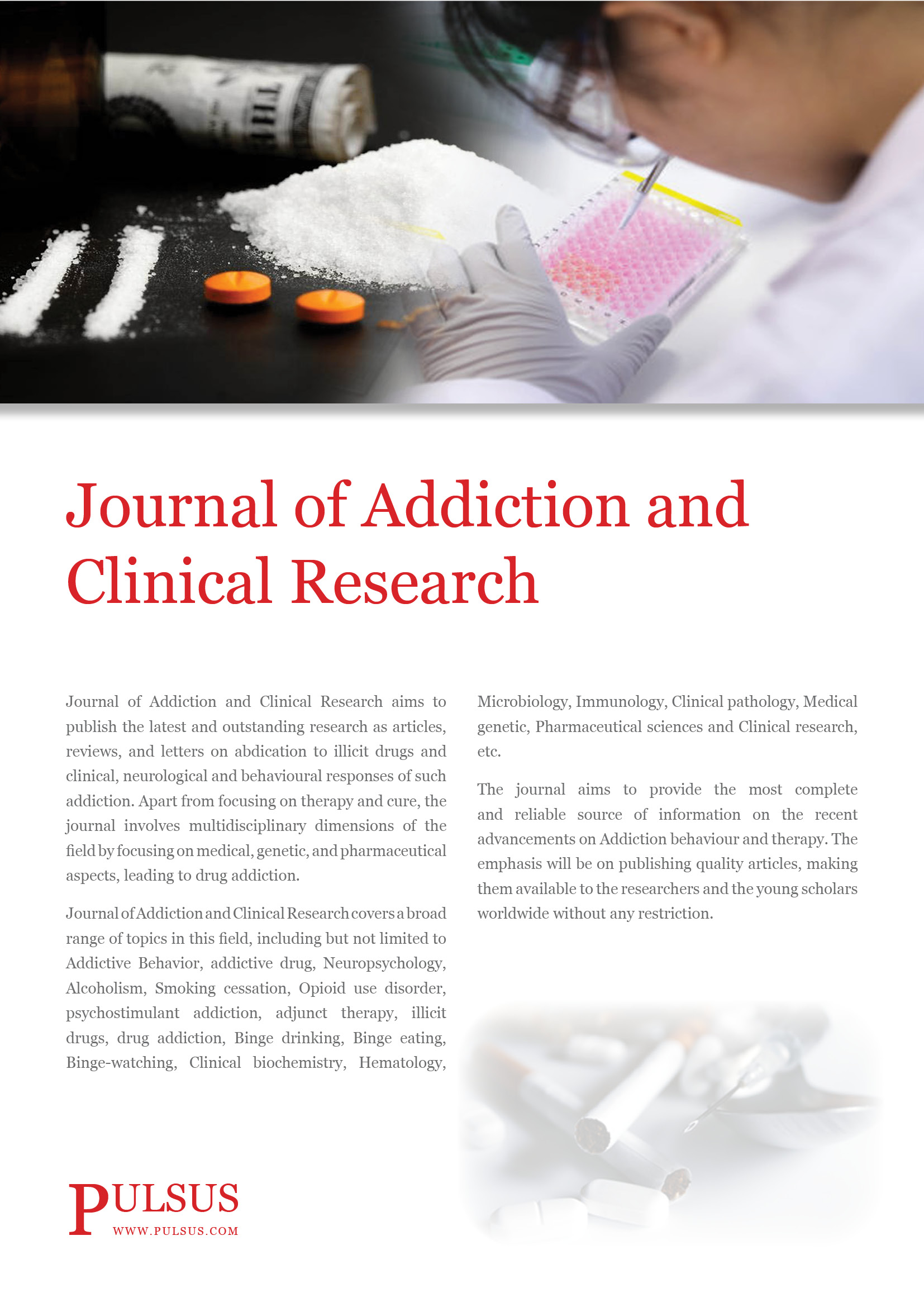
Alcohol use following the Las Vegas shootings: What we can expect? What we can do?
Lewis, M. W. (2017). Alcohol use following the Las Vegas shootings: What we can expect? What we can do?. Journal of Addiction and Clinical Research, 1(1).
This editorial from the Journal of Addiction and Clinical Research looks back on alcohol and drug use research following other large-scale disasters (e.g., Oklahoma City Bombing and September 11 attacks). The author cites past research to suggest that an increase in substance use should be expected following the Las Vegas shooting and that the community should be prepared to provide effective and trauma-informed interventions targeting substance use.
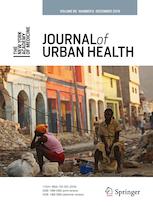
A vulnerable population in a time of crisis: Drug users and the attacks on the World Trade Center
Weiss, L., Fabri, A., McCoy, K., Coffin, P., Netherland, J., & Finkelstein, R. (2002). A vulnerable population in a time of crisis: Drug users and the attacks on the World Trade Center. Journal of Urban Health: Bulletin of the New York Academy of Medicine, 79(3), 392-403.
This qualitative study focused on the impact of the on New York City residents who are current or former users of heroin, crack, and other forms of cocaine. The findings in this small sample are that drug use did not significantly change in the immediate aftermath of the September 11 attacks. However, there were 10 active users in the study that reported an initial increased use of either heroin or cocaine. In addition to the emotional impact of the attacks, several active users described practical impacts as well (e.g., decreased of income). Of the 21 former users, 4 relapsed. Findings also suggest that those who had stopped using more recently were more likely to relapse.
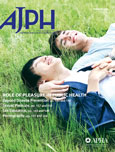
Exposure to the World Trade Center attack and the use of cigarettes and alcohol among New York City public high school students
Wu, P., Duarte, C. S., Mandell, D. J., Fan, B., Liu, X., Fuller, C. J., . . . Hoven, C. W. (2006). Exposure to the World Trade Center attack and the use of cigarettes and alcohol among New York City public high school students. Am J Public Health, 96(5), 804-807. doi:10.2105/AJPH.2004.058925)
This study examined the relationship between exposure to the September 11 attacks and changes in cigarette smoking and drinking in New York City high school students. There was a significant relationship between direct exposure to the attacks and increased drinking, but not with cigarette smoking. However, smoking was marginally associated with posttraumatic stress disorder. The study concludes that targeted substance use interventions for youths should be strongly considered after large-scale disasters.

Psychosocial interventions for children and adolescents after man-made and natural disasters: a meta-analysis and systematic review.
Brown, R. C., Witt, A., Fegert, J. M., Keller, F., Rassenhofer, M., & Plener, P. L. (2017). Psychosocial interventions for children and adolescents after man-made and natural disasters: a meta-analysis and systematic review. Psychol Med, 47(11), 1893-1905. doi:10.1017/S0033291717000496
This meta-analytic review includes studies that investigate specific posttraumatic interventions for youth after man-made and natural disasters. Across the 36 studies that were analyzed, cognitive–behavioral therapy (CBT), eye movement desensitization and reprocessing (EMDR), narrative exposure therapy for children (KIDNET) and classroom-based interventions were the most frequently studied treatments. These interventions showed similar effect sizes in pre to post treatment comparisons.

Children's Mental Health in the Context of Terrorist Attacks, Ongoing Threats, and Possibilities of Future Terrorism.
Comer, J. S., Bry, L. J., Poznanski, B., & Golik, A. M. (2016). Children's Mental Health in the Context of Terrorist Attacks, Ongoing Threats, and Possibilities of Future Terrorism. Curr Psychiatry Rep, 18(9), 79. doi:10.1007/s11920-016-0722-1
This article looks beyond the relationship between direct terrorism exposure and child PTSD symptoms. Some topics that the authors discuss include: non-PTSD clinical outcomes, individual differences associated with mental health outcomes, and effects of media exposure. Repeated terrorism exposure, ongoing threats, and extended uncertainty about future attacks are also discussed.

School- and Classroom-Based Supports for Children Following the 2013 Boston Marathon Attack and Manhunt.
Green, J. G., Holt, M. K., Kwong, L., Reid, G., Xuan, Z., & Comer, J. S. (2015). School- and Classroom-Based Supports for Children Following the 2013 Boston Marathon Attack and Manhunt. School Ment Health, 7(2), 81-91. doi:10.1007/s12310-014-9140-x
Researchers report on survey data from Boston-area teachers after the 2013 Boston Marathon bombing and subsequent manhunt. Data were collected on their perception of classroom-wide psychiatric distress and the types of supports that schools and teachers provided 2–5 months after the attack. Reported student exposure to the bombings and manhunt were significantly associated with teacher perceptions of classroom-wide psychiatric distress. Other findings found that almost half of the schools had no formal policy for responding to the crisis and half of teachers reported no training to address the events. Support was provided to the students, but the extent and type of support varied greatly.
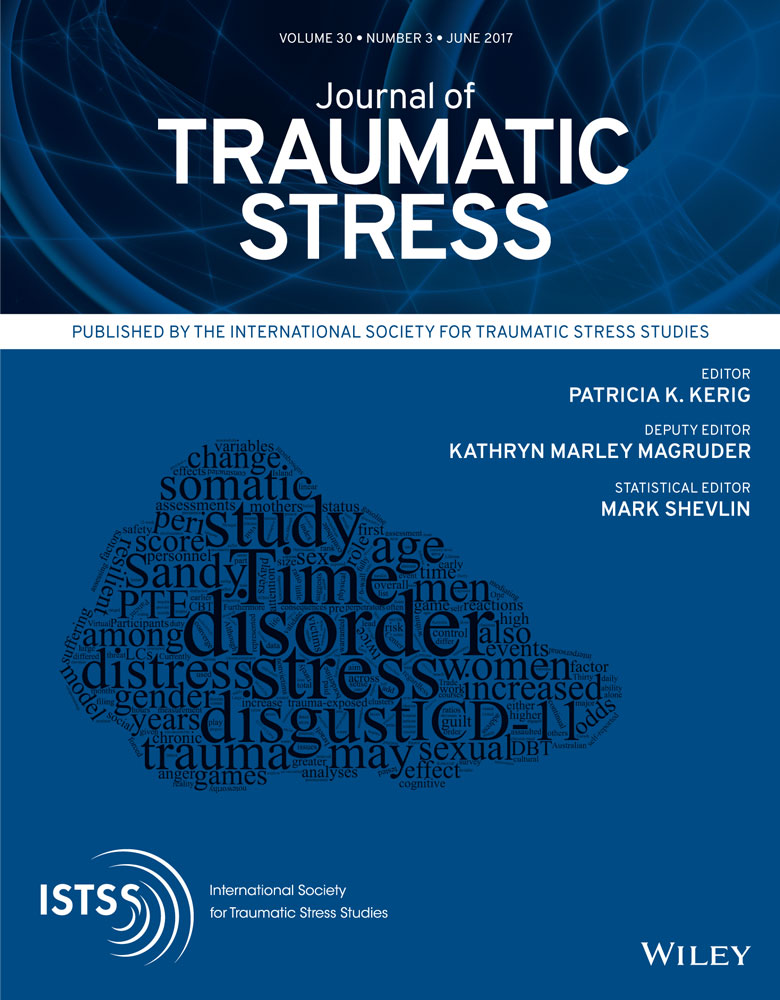
Life Threat and Sleep Disturbances in Adolescents: A Two-Year Follow-Up of Survivors from the 2011 Utøya, Norway, Terror Attack.
Gronli, J., Melinder, A., Ousdal, O. T., Pallesen, S., Endestad, T., & Milde, A. M. (2017). Life Threat and Sleep Disturbances in Adolescents: A Two-Year Follow-Up of Survivors from the 2011 Utøya, Norway, Terror Attack. J Trauma Stress, 30(3), 219-228. doi:10.1002/jts.22196
This study reports specific sleep disturbance in 42 survivors of the 2011 mass shooting at a youth summer camp on the Norwegian island Utøya. When compared with matched controls, significantly more survivors reported having sleep disturbances. The study details differences in specific sleep disturbances between the sample of survivors and matched controls and differences between the survivors with and without psychiatric diagnoses.
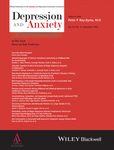
Catastrophizing, rumination, and reappraisal prospectively predict adolescent PTSD symptom onset following a terrorist attack.
Jenness, J. L., Jager-Hyman, S., Heleniak, C., Beck, A. T., Sheridan, M. A., & McLaughlin, K. A. (2016). Catastrophizing, rumination, and reappraisal prospectively predict adolescent PTSD symptom onset following a terrorist attack. Depress Anxiety, 33(11), 1039-1047. doi:10.1002/da.22548
Investigators looked at the relationship between pre-trauma emotion regulation strategies and PTSD symptomology after the 2013 Boston Marathon terrorist attack among adolescents. The sample of Boston-area adolescents had previously participated in studies assessing emotion regulation and psychopathology. Greater pre-trauma engagement in unhealthy emotional regulation strategies was associated with onset of PTSD symptoms following the attack. These relationships were moderated by high levels of media.
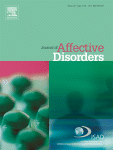
Caregiver distress, shared traumatic exposure, and child adjustment among area youth following the 2013 Boston Marathon bombing.
Kerns, C. E., Elkins, R. M., Carpenter, A. L., Chou, T., Green, J. G., & Comer, J. S. (2014). Caregiver distress, shared traumatic exposure, and child adjustment among area youth following the 2013 Boston Marathon bombing. J Affect Disord, 167, 50-55. doi:10.1016/j.jad.2014.05.040
This study examined the relationships among levels of exposure, caregiver distress, and child outcomes during the Boston Marathon bombing and subsequent manhunt. Caregivers completed surveys asking about caregiver and child exposure to event, post-attack caregiver distress, and child psychological functioning post-attack. The effects of a child’s level of exposure on their mental health outcomes were stronger for children with a distressed caregiver. Additional regression modeling is reported to identify possible interactions and covariates.
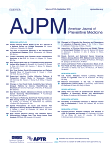
Effect of the incident at Columbine on students’ violence- and suicide-related behaviors
Brener, N. D., Simon, T. R., Anderson, M., Barrios, L. C., & Small, M. L. (2002). Effect of the incident and Columbine on students' violence- and suicide-related behaviors. American Journal of Preventative Medicine, 22(3), 146-150.
The shootings at Columbine High School in April 1999 occurred while data was being collected for the 1999 Youth Risk Behavior Survey (YBRS), which is a large survey that measures health-related behaviors that often lead to death and disability among youth and adults, including behaviors related to violence and suicide. Researchers compared data collected prior to the shootings at Columbine High School and after the shootings using logistic regression analyses. The data show an increase in feeling unsafe after the incident but show a decrease in reports considering suicide or making a suicide plan. Researchers suggest this may be an instance of “converse imitation” and that the association with the perpetrators’ dying via suicide with the homicides actually decreased the likelihood of suicidal thoughts and behaviors of youth and adolescents. They also posit that the coverage of the event including the perpetrators’ suicides decreased the willingness to report these symptoms.
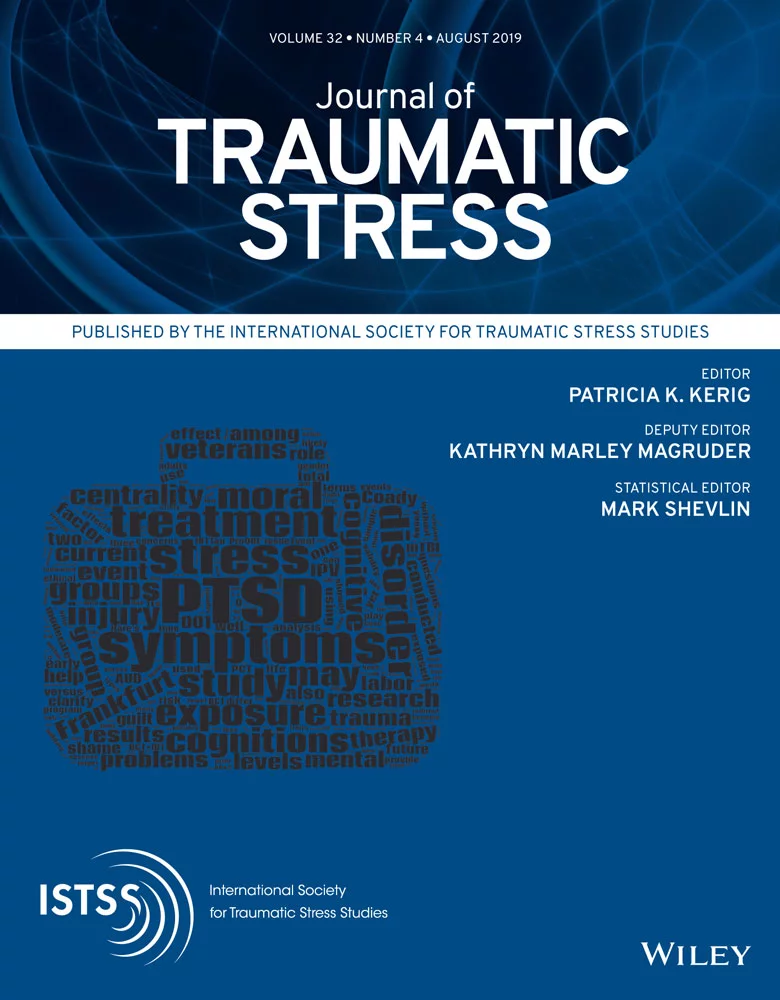
Adolescent exposure to the World Trade Center attacks, PTSD symptomatology, and suicidal ideation
Chemtob, C. M., Madan, A., Berger, P., & Abramovitz, R. (2011). Adolescent exposure to the World Trade Center attacks, PTSD symptomatology, and suicidal ideation. J Trauma Stress, 24(5), 526-529. doi:10.1002/jts.20670
This study looks at the relationship between different levels of exposure to trauma, posttraumatic stress symptoms (PTSS), and suicidal ideation in adolescents. Researchers used logistic regression analyses to examine the relationships between the three variables and found that level of exposure to the 9/11 attacks increased risk for both suicidal ideation and PTSS. Specifically, having a family member who was hurt but not killed in the attacks increased risk for suicidal ideation, but knowing someone who was killed did not increase the risk.
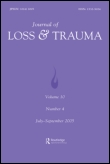
Traumatic Bereavement and Terror: The Psychosocial Impact on Parents and Siblings 1.5 Years After the July 2011 Terror Killings in Norway
Dyregrov, K., Dyregrov, A., & Kristensen, P. (2015). Traumatic Bereavement and Terror: The psychosocial impact on parents and siblings 1.5 years after the July 2011 terror killings in Norway. Journal of Loss and Trauma 20(6), 556-576. doi:10.1080/15325024.2014.957603
The parents and siblings of the victims from 2011 Utoya Island killings in Norway completed a series of measures related to their loss, social support, and experiences, including 2 items on suicidal ideation from the General Health Questionnaire (GHQ-12). A higher percentage of siblings reported higher levels of suicidal ideation than parents, leading researchers to emphasize the importance of resources for siblings and young people after community traumas and loss.

The effects of vicarious exposure to the recent massacre at Virginia Tech
Fallahi, C. R., & Lesik, S. A. (2009). The effects of vicarious exposure to the recent massacre at Virginia Tech. Psychological Trauma: Theory, Research, Practice, and Policy, 1(3), 220-230. doi:10.1037/a0015052
Researchers studied the effects of vicarous trauma, including suicidal ideation, after the Virginia Tech shootings in 2007. Using regression analyses, the study showed that increased TV viewing of event coverage was associated with an increased probability of moderate or acute stress symptoms. Overall very few responses indicating suicidal ideation were observed, which made including this variable in some of the more sophisticated models not possible. However, chi-squared statistics showed a statistically significant difference in suicidal ideation across race and gender, and hours of TV coverage both approached significance. No differences were observed across age groups.

Prevalence and psychological correlates of complicated grief among bereaved adults 2.5–3.5 years after September 11th attacks
Neria, Y., Gross, R., Litz, B., Maguen, S., Insel, B., Seirmarco, G., . . . Marshall, R. D. (2007). Prevalence and psychological correlates of complicated grief among bereaved adults 2.5-3.5 years after September 11th attacks. J Trauma Stress, 20(3), 251-262. doi:10.1002/jts.20223
This study reviewed the relationship between complicated grief following the 9/11 attacks, levels of trauma exposure during 9/11, and other mental health symptomology and complicated grief. Using logistic regression, results showed a significant relationship between complicated grief and suicidal ideation. Researchers cite support to suggest that people with unresolved grief are a high risk from suicidal ideation and that this relationship was still observed after adjusting for comorbid depression.
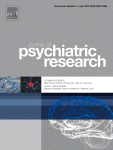
The burden of full and subsyndromal posttraumatic stress disorder among police involved in the World Trade Center rescue and recovery effort
Pietrzak, R. H., Schechter, C. B., Bromet, E. J., Katz, C. L., Reissman, D. B., Ozbay, F., . . . Southwick, S. M. (2012). The burden of full and subsyndromal posttraumatic stress disorder among police involved in the World Trade Center rescue and recovery effort. J Psychiatr Res, 46(7), 835-842. doi:10.1016/j.jpsychires.2012.03.011
Researchers assessed levels of PTSD, exposure, and other mental health symptomology in a large population of police who were involved with resuce and recovery efforts following the 9/11 attacks in New York City. The assesssments were completed four years after the attacks and included an item on the Patient Health Questionnaire (PHQ-9) that assessed suicidal ideation. After adjusting for demographics and other possible comorbidity, respondents with higher levels of PTSD symptoms were more likely to report suicidal ideation.

Cross-National Analysis of the Associations between Traumatic Events and Suicidal Behavior: Findings from the WHO World Mental Health Surveys
Stein, D. J., Chiu, W. T., Hwang, I., Kessler, R. C., Sampson, N., Alonso, J., . . . De Girolamo, G. (2010). Cross-national analysis of the associations between traumatic events and suicidal behavior: findings from the WHO World Mental Health Surveys. PLoS One, 5(5), e10574.
This paper presents findings on trauma exposure and suicidal behavior from the World Health Organization mental health survey. Several analyses and models were created, looking at trauma severity, frequency, and exposure as predictors of lifetime suicidal behaviors (i.e., suicide ideation, plans, and attempts) in a cross-national sample. Although mass violence or mass shootings was not a category that was examined, the study included many predictors of interest including: man made disasters versus natural disasters and accidents, witness/perpetrator violence, and death of/trauma to loved one as types of traumatic events. The odds ratios reported in the paper show that experiencing a man made disaster was significantly related to suicidal ideation and suicide attempts. This effect was not present in a multivariate model after controlling for the effects of other traumatic events. The relationship between witnessing violence and suicidal ideation and attempts remained significant after controlling for other events.
